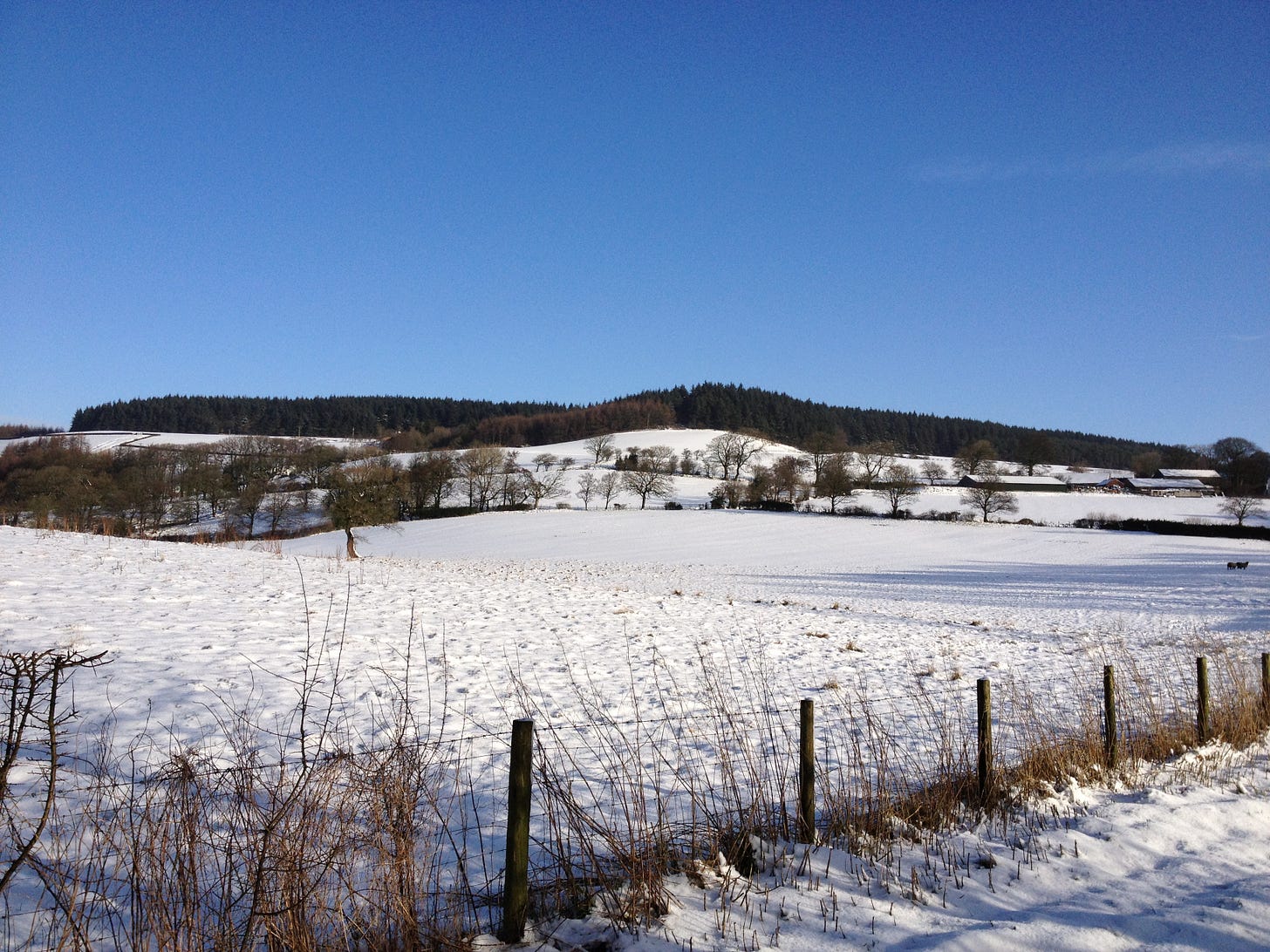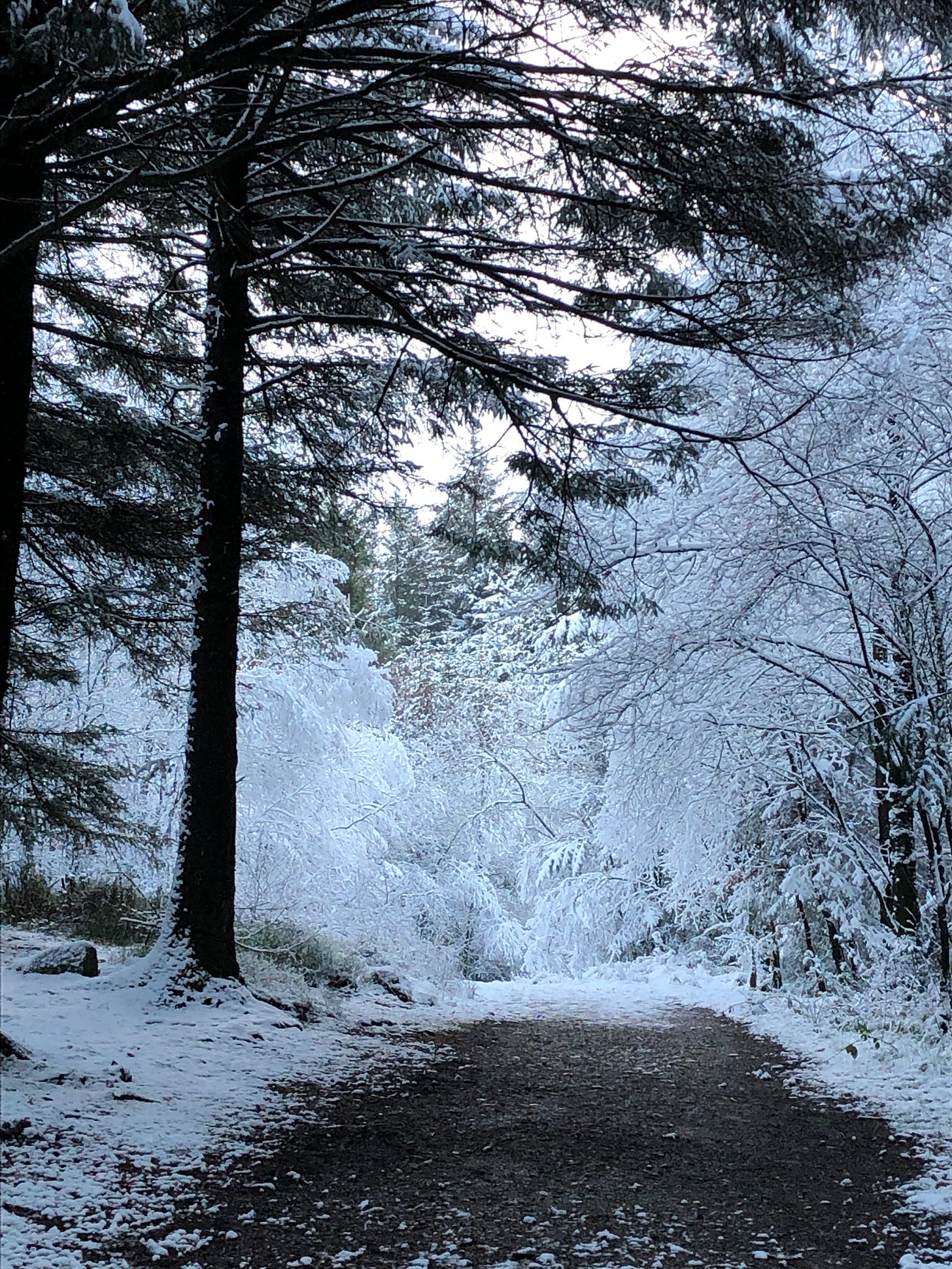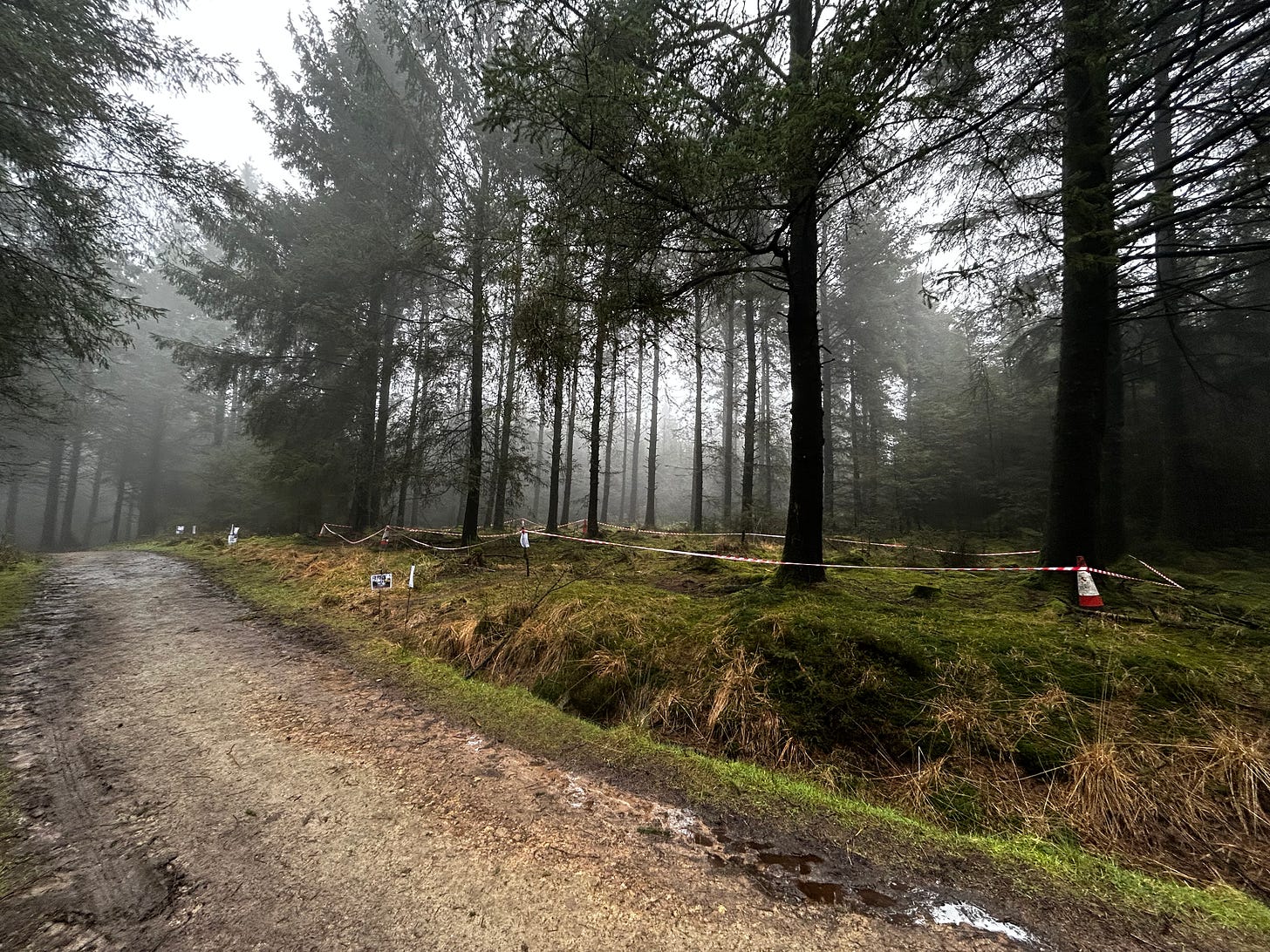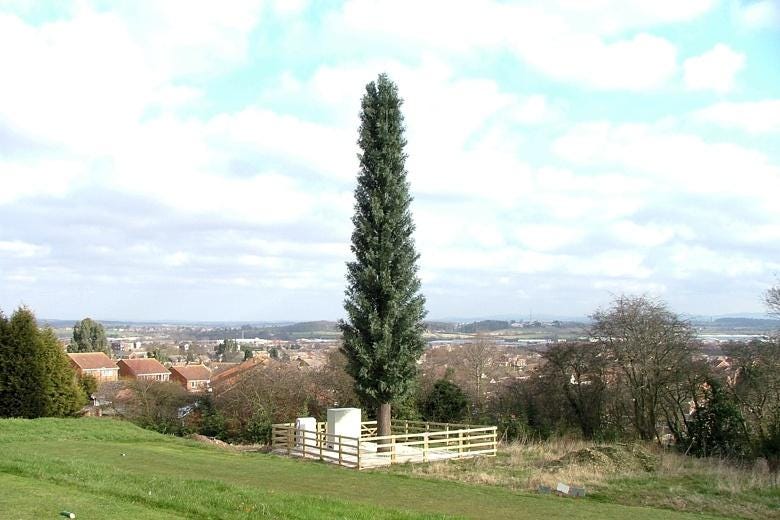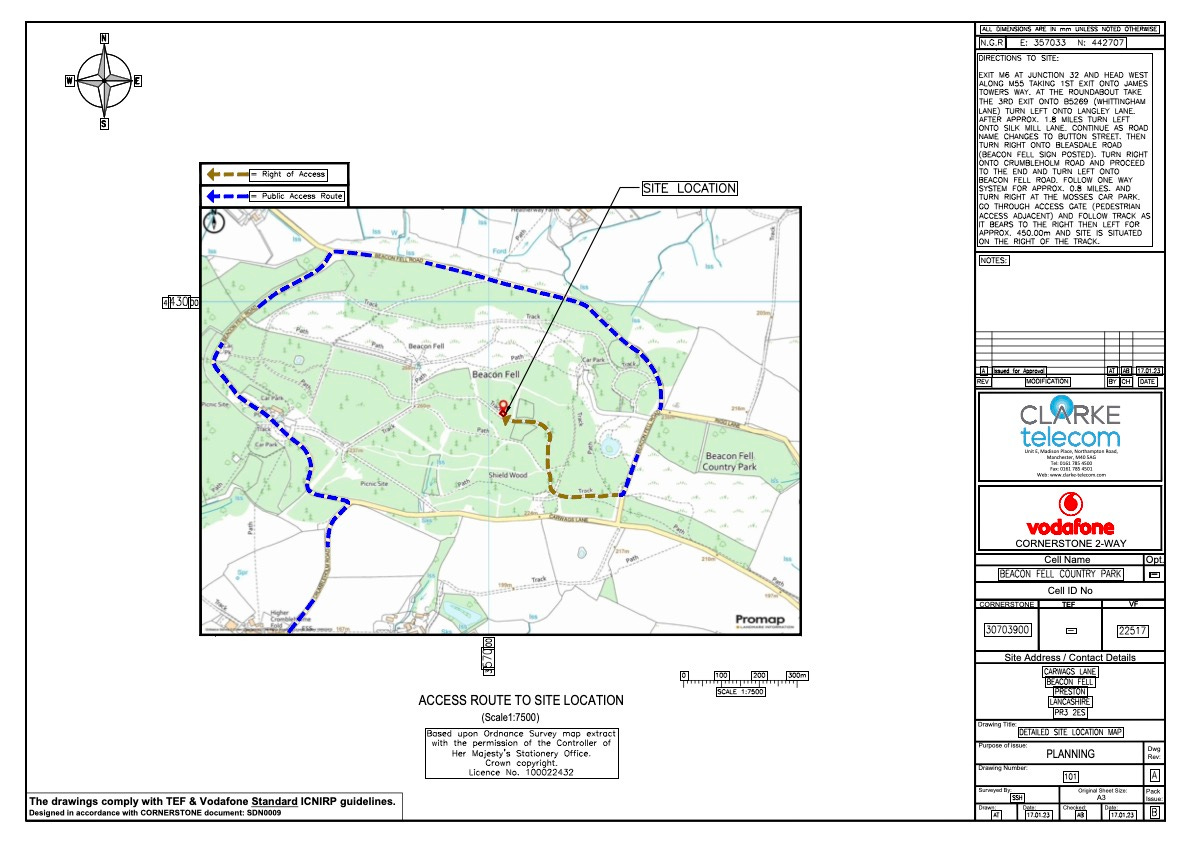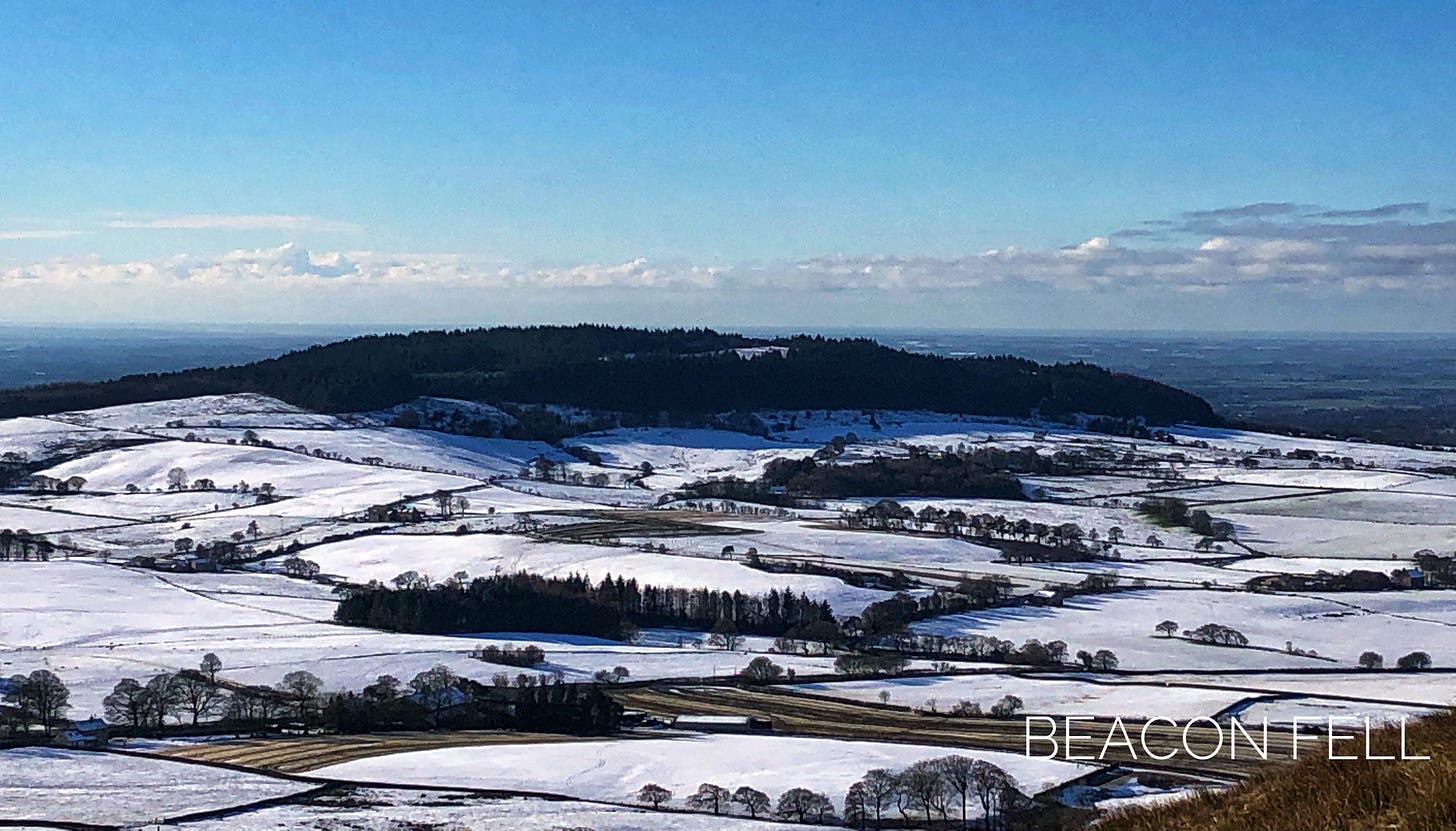Nature-Positive Communication Towers
Could we have a nature-first generation of communication masts?
Beacon Fell Country Park is situated within the Forest of Bowland Area of Outstanding Natural Beauty. (now designated as National Landscape) The site is 75 hectares of woodland, grassland and moorland. Large areas of Beacon Fell have been declared as a Biological Heritage Site. As an isolated hill, Beacon Fell rises to 266 metres above sea level and has magnificent views of the Lancashire Plain to the south, and the south Bowland Fells to the north.
Cornerstone has applied for planning permission to construct a communications tower that will be some 10m higher than the tree line and require the continual running of a generator
I am a local resident and walk over or cycle around the fell just about daily. I often see deer foraging, Buzzards above and Blackcaps around the area of the proposed development.
The application for this tower has understandably split opinions, some feel that, yes, we need better rural communication wherever that may be sited, whilst others think we should never site such development in an area of outstanding natural beauty.
The new (as of Wednesday 22 November 2023) National Landscape designation for Beacon Fell is designed to add more safeguard against developments of this nature The new name reflects its national importance and the vital contribution Beacon Fell makes to protect the nation from climate change, nature depletion and the wellbeing crisis, whilst also creating greater understanding and awareness of the contribution that National Landscapes do for human and environmental health.
However, could we see a nature-first and nature-positive approach to this application and others that will surely arise around the country as we push to satisfy our 5G needs for essential services and selfies?
The Potentials
We could adopt the ethos from the Potawatomi indigenous people’s Honourable Harvest (as shared by Robin Wall Kimmerer )
Ask nature for permission, And abide by what you hear
If we are to build on virgin land then could communications towers function as a tree? If buildings, cars, and lifts can have regenerative functions why not communication towers? In regenerative thinking, we should think of potentials, and possibles and not focus on existing methodologies that continually present problems on many fronts. A few thoughts for starters, borrowing from regenerative thinking around the world ...
Communication Towers that do more good than harm, that look and feel right ...
Are conceived, designed, constructed and operated on a nature-first principle Are visually attractive, looking and even functioning like a tree Harvests and cleans water and returns to ground aquifers. Or clean water for drinking water refill (as the EV Charging station in Dundeed) Harvest the sun and use it to generate energy (maybe supplying surplus energy to the nearby cafe or charging points) Has an amazing biodiversity gain (the same as a tree!) Provides habitat for local wildlife Replenishes soils (through water and biodiversity) Has a net zero impact on place, site and access Brings joy, awe and inspiration Demonstrates sustainable commitments and responsibilities Co-created with the local community, attracting support Is zero carbon in production, embodied, and in operation Offsets through local onsite on-setting Uses materials that are non-toxic to humans and the natural ecosystem, in extraction, production and disposal Comprises of materials that will never see landfill or incineration but are reusable and through upgrade servicing, upcycle And just feels right
It can be done …
Mobile phone operators should be asked to disguise their phone masts as trees. Rossendale council’s development control committee agreed the recommendation after approving a planning application for a new 5G mast in Newchurch (Lancashire).
The Problems
The Beacon Fell proposal has been strongly objected to by the local Goosenargh Parish Council
Chapter 15 of the newly updated National Planning Policy Framework (Dec 2023) covers conserving and enhancing the natural environment. Para 180 states that planning policies and decisions should contribute to and enhance the natural and local environment by
a) protecting and enhancing valued landscapes
b) recognising the intrinsic character and beauty of the countrysideBeacon Fell is an Area of Outstanding Natural Beauty and is clearly an important and valued landscape with large areas declared as a Biological Heritage Site. The proposal, which involves the removal and felling of trees, as well as installing a generator, would interfere with the natural ecology and habitat.
Yet strangely Natural England has no objections despite their guidance requiring that any development within AONBs aim to conserve and enhance their natural beauty. The erection of such an intrusive structure clearly contradicts this principle.
There is an online petition here and the planning documents can be Preston planning portal Planning ref: 06/2023/0259 But note the comments form is not working so email any comments to devcon@preston.gov.uk
Here are my comments and questions registered with the planning office …
I am a local resident and walk over or cycle around the fell just about daily. I often see deer foraging, Buzzards above and Blackcaps around the area of the proposed development.
Consequently, I have the following concerns and questions:
Why is this being considered an Area of Outstanding Natural Beauty (and as of Wednesday 22 November 2023 designated a National Landscape - designed to add more safeguard against developments of this nature) The new name reflects its national importance and the vital contribution Beacon Fell makes to protect the nation from climate change, nature depletion and the wellbeing crisis, whilst also creating greater understanding and awareness of the contribution that National Landscapes do for human and environmental health.
Why has this development been considered on virgin land? (Something prohibited by leading sustainable building standards such as the Living Building Challenge unless it enhances visitors' understanding of and relationship with the natural environment)
Can you share other locations that have been considered which are not in National Landscapes or on virgin land?
As the tower will be 10m taller than surrounding trees it will stand proud from the tree line and be visible from all directions, spoiling what many consider a local, iconic profile, identifiable from many miles around, (the fell can be seen and identified even as far as North Wales, the Isle of Man and the Lake District)
Indeed, the high visibility of the fell has made it an ideal location for a beacon that has been recorded as early as 1002. The fell formed part of a chain of beacons to warn of the approach of the Spanish Armada in 1588, and of French forces between 1795 and 1815 and more recently, beacon chains have been lit in celebration of coronations and jubilees.
Beacon Fell is used for numerous groups and individuals for mental health, social prescribing, biophilic walks and forest bathing meditations. It is seen by many as a ‘wild’ and ‘natural’ area. Any unsympathetic development destroys this.
Why has the tower not been disguised or masked as a natural feature as happens elsewhere? Or a nature -first, nature positive approach been considered?
Why has the base infrastructure not been designed to be sympathetic to the natural area - concrete and chain link fencing is not sympathetic and demonstrates a lack of concern for the natural environment.
Can you share any whole life carbon (WLC) assessment that must have been undertaken, demonstrating how that accounts for eg removal of healthy trees, the construction (A1-A5) embodied carbons (tower, base, construction activities) along with emissions from the running of a generator and how these will be on-set or off-set?
Can you share how the biodiversity disruption to soils and surrounding vegetation trees has been taken into account in determining a Biodiversity Net Gain?
Can you share how construction methodologies that plan to use existing tracks for access will minimise disruption to the natural environment and the National Landscape users?
Can you explain why the Lancashire County Council (understood to be the land owner under which the Fell and Visitor Center / Cafe are managed) is campaigning against this development?
Should this be granted there is the concern that this could be used to allow further development.
I am not against communication masts in general - as a local resident I am aware of the poor mobile phone connectivity in the area - HOWEVER, such mast development needs to be appropriately sited - and certainly not on virgin land or in areas of outstanding natural beauty as the National Landscape of Beacon Fell.
But lets explore nature-first and nature-positive approaches, whether in an area designated as a National Landscape or not.



